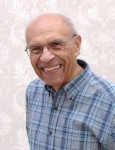
James
Allen
Arnold
August 10, 1936 - February 29, 2020
Born in Philadelphia, PA
Resided in Troy, Michigan
James (“Jim”) Arnold passed away on February 29, 2020, at the age of 83. He is survived by his daughter, Joy Arnold, his son, Jay Arnold, his daughter-in-law, Michele Arnold, and the two granddaughters who stole his heart and called him “Poppy Jim,” Abigail and Alison Arnold. Jim lost his wife of 56 years, Janice Arnold, in 2015. Theirs was a loving marriage that exemplified shared values and unconditional support through thick and thin.
Jim was preceded in death by his parents, Mamie and Benjamin Arnold, his brothers, Benjamin and Howard Arnold, and his sister, Jean Milburn. He is survived by his brother, Charles Arnold, his brothers-in-law, Lester Kleckley, Darrell Kleckley and Fred Perry, and his sisters-in-law, Gudrun Arnold, Gloria Walker, Brenda Barksdale, Christine Kleckley, Raj Kleckley, and Ellen Ruck. He also leaves behind a vast extended family, many close friends, and a long record of quoting lines from Rudyard Kipling’s “If—” poem whenever a celebration necessitated a toast.
Jim was born and grew up in West Philadelphia. As the baby in his family of seven, he was occasionally indulged by his parents, his brothers and his sister. Jim credited his grandfather, a 1917 alumnus of the University of Pennsylvania, with setting high academic expectations, keeping a watchful eye on his progress, and sparking the competitive spirit that enabled Jim to graduate third in his class from West Philadelphia High School. In 1958, Jim received a bachelor’s degree in Aeronautical Engineering from Pennsylvania State University, becoming the first African American student to obtain a degree from this nascent program, which at the time was just being carved out from mechanical engineering. Jim later received a master’s degree from Rensselaer Polytechnic Institute, where he focused on engineering mechanics.
Following his graduation from college, Jim moved to Seattle and began his professional career at The Boeing Company. His first engineering work related to the B-52 Stratofortress, a plane that was the subject of a 1957 Life Magazine article that had captured Jim’s attention and prompted his application for the job with Boeing. Not long after arriving at Boeing, Jim asked to see the plane. He was given an opportunity to pull himself into the weapons bay and access the interior. The memory of that experience must have stayed with him. About six weeks before his death, Jim and his daughter were looking at a 2020 Popular Mechanics article entitled, “Why the B-52 is such a Badass Plane.” Jim smiled when he read the title, and affirmed, “Yes, it was!”
By the early 1960s, Jim and his wife, Janice, were feeling the tug of their extended family on the east coast. They decided to leave Seattle, and Jim took a job with the Connecticut aerospace manufacturer, Pratt & Whitney. He and Janice made a new home in South Windsor, Connecticut. At the time, South Windsor was a town of less than 10,000, with few African American residents. Jim’s warmth and quiet self-assurance challenged stereotypes and calmed those in the community who were not yet comfortable with diversity. He eventually made a successful run for the local school board, where he served for eight years, becoming its chairman. Jim’s interest in politics became a life-long passion, and he was particularly thrilled when, at the end of his life, a letter he sent to President Barack Obama received a thoughtful reply.
Jim Arnold’s years as a Pratt & Whitney engineer were productive ones. He worked on various engine programs, was responsible for writing incident assessments when Pratt & Whitney technology was involved in aircraft mishaps, and contributed to the development of the Pratt & Whitney fuel cells that would eventually provide electric power and potable water for the Apollo missions. He also was invited to join Pratt & Whitney Credit Union’s Board of Directors, and was actively involved in the Pratt & Whitney Speaker’s Bureau, a group that inspired local students to consider careers in the STEM fields.
Jim was proud of his career accomplishments, but they were only one dimension of his life. He was a very committed and engaged parent, never missing a concert, dramatic performance, or athletic event, and reinforcing his children’s interests through trips to any stimulating venue within driving distance of South Windsor. Long before children’s birthday parties became something close to a competitive sport, Jim’s magic shows, mock radio shows, and other engineering-enhanced birthday activities were celebrated by his children and their friends. And despite having some serious deficits in his camping and fishing skills, Jim and his son were active participants in the group formerly known as “Indian Guides” (which, out of sensitivity to Native Americans, has now been renamed “Adventure Guides”). In a move that exemplified Jim’s sly wit, he selected the “Indian” name of “Red Fox,” a nod to the stand-up comedian who starred on the long-running “Sanford and Son” television show. Jim was amused that his fellow Guides never got the joke.
For about the first twenty years of Jim and Janice’s marriage, their division of household responsibilities was fairly traditional. Eventually, however, a few memorable cooking disasters diminished Janice’s enthusiasm for the task, and Jim began to make the family’s meals. It was a satisfying arrangement for everyone, and a responsibility that Jim embraced. He loved great food and enjoyed recreating dishes he had enjoyed in restaurants. Before long, the family library filled with cookbooks; new investments in cookware and ingredients were made, and Jim’s midsection began to expand.
In 1977, Jim accepted a job offer from the Ford Motor Company, and the family relocated to Troy, Michigan. Jim’s transition from airplane to automobile engines coincided with a surge of Japanese automobiles into the U.S. market as a result of consumer demand for small, fuel-efficient cars. A couple of years after joining Ford, Jim received an invitation to serve as an automobile industry representative in a debate on import restrictions and market access at Brown University. With Ford’s approval and voluminous preparatory materials provided by its public relations team, Jim was able to hold his own debating professors of economics, political science, history, and sociology. His understanding of Japanese imports, exports, and cultural values in business would serve him well. For the last half of his employment at Ford, Jim had responsibility for a series of joint projects between Ford and two Japanese manufacturers, Yamaha Motor Company and Mazda Motor Corporation. And thanks to some successful language tutoring, Jim eventually was able to give a speech to his Mazda colleagues in Japanese.
In the 1980s, Jim took an assignment in the United Kingdom with Ford of Britain, and he and Janice became expats. Living abroad was a memorable experience for both of them, broadening their worldview and indulging their wanderlust. The British economy also got a large boost, thanks to Jim’s and Janice’s acquisition of many souvenirs of their expat journey.
Jim and Janice became tennis fans during their time in Britain, and it is likely that Jim’s enthusiasm for Kipling’s “If—” poem stemmed from the inspirational inscription above the tunnel that leads to the locker room closest to Wimbledon’s Center Court: “IF YOU CAN MEET WITH TRIUMPH AND DISASTER AND TREAT THOSE TWO IMPOSTERS JUST THE SAME.” Perhaps taking a cue from Kipling, Jim never boasted about his remarkable accomplishments, and he rarely showed frustration when life’s challenges began to pile up.
The Arnolds’ expat years overlapped with the opening of Andrew Lloyd Webber’s “Phantom of the Opera” in London. Jim loved the show and was lucky to see it several times. He had always appreciated musical theatre, but “Phantom” would become his all-time favorite. At the end of Jim’s life, his music therapists used the show’s tunes to tap into Jim’s memories and give him many moments of contentment and engagement.
Jim and Janice’s return to the United States happened to coincide with Penn State University’s decision to join the Big Ten Conference. This was an auspicious turn of events. Jim was an enthusiastic Nittany Lions football fan, and was willing to invest in his enthusiasm. After Penn State joined the Big Ten, Jim loved to place small wagers on game outcomes with the vast network of University of Michigan, Michigan State, and Ohio State alumni who made up his circle of friends and colleagues at Ford. After Jim’s retirement, this practice continued. Jim looked forward to the days when his Ford friends would invite him to lunch, engage in some teasing and trash talk, and more often than not, take his money.
Jim retired from Ford in 2007. To his amusement, at the time of his retirement, he was the oldest engineer in Ford’s Powertrain Operations workforce, a fact that most of his colleagues did not know. He probably would have tried to stay longer, but Janice needed him. She had been diagnosed with pulmonary fibrosis, an irreversible lung scarring disease. At the time, no treatments for the disease were available, but it was believed that exercise could slow disease progression. For the next eight years, Jim was up by 5:00 a.m. at least three days a week in order to take Janice to pulmonary rehabilitation, ensuring that she arrived before anyone might have coughed or sneezed on the recently cleaned equipment. Jim was always attentive, encouraging, and patient; his calm presence provided a constant source of reassurance as Janice’s disease progressed.
Janice’s death may have acerbated Jim’s health challenges. He spent the last years of his life dealing first with mild cognitive decline, and later with a diagnosis of Alzheimer’s disease. As his cognitive challenges became manifest, he and his family looked for compensatory mechanisms to slow his disease. The ketone ester research of Drs. Richard Veech and Mary Newport proved to be a game-changer for Jim, minimizing and delaying many of the characteristic features of his Alzheimer’s disease dementia, and enabling him to regain real quality of life. He pursued art projects that aligned with the woodworking and home improvement efforts that had given him much satisfaction throughout his life. He was immensely pleased when his artistic creations were transferred to prints that he was able to gift to close friends, family members, and some of his doctors.
Jim did his best to live a life clothed in grace, dignity, and laughter and, in every way that matters, to “fill the unforgiving minute with sixty seconds worth of distance run.” He will be remembered by many as a friendly but reserved man, yet those who knew him well recognized that under his quiet exterior, Jim had a keen wit and a bit of mischievousness, usually informed by intellectual vivacity. In the last week of his life, Jim was still flashing his giant smile and able to meaningfully engage with others in the comfort of his own home. His ability to have real quality in the final stage of his life, and to experience a peaceful death, was due to the love he received from his family, and to the nurses, therapists, and volunteers of Residential Hospice of Troy, who supported him with music and pet therapy, as well as companionship and medical care. .
Jim’s life will be memorialized privately by his family. The family hopes that everyone who remembers Jim will use their best efforts to vote in the 2020 presidential election. Regardless of party, Jim believed that we all have an obligation to participate in our democracy, and he would be thrilled to know that some might be doing so in his honor. Those who wish to make a memorial donation are encouraged to consider the Alzheimer’s Association or similar charities working to accelerate research to end this devastating disease.
Jim was preceded in death by his parents, Mamie and Benjamin Arnold, his brothers, Benjamin and Howard Arnold, and his sister, Jean Milburn. He is survived by his brother, Charles Arnold, his brothers-in-law, Lester Kleckley, Darrell Kleckley and Fred Perry, and his sisters-in-law, Gudrun Arnold, Gloria Walker, Brenda Barksdale, Christine Kleckley, Raj Kleckley, and Ellen Ruck. He also leaves behind a vast extended family, many close friends, and a long record of quoting lines from Rudyard Kipling’s “If—” poem whenever a celebration necessitated a toast.
Jim was born and grew up in West Philadelphia. As the baby in his family of seven, he was occasionally indulged by his parents, his brothers and his sister. Jim credited his grandfather, a 1917 alumnus of the University of Pennsylvania, with setting high academic expectations, keeping a watchful eye on his progress, and sparking the competitive spirit that enabled Jim to graduate third in his class from West Philadelphia High School. In 1958, Jim received a bachelor’s degree in Aeronautical Engineering from Pennsylvania State University, becoming the first African American student to obtain a degree from this nascent program, which at the time was just being carved out from mechanical engineering. Jim later received a master’s degree from Rensselaer Polytechnic Institute, where he focused on engineering mechanics.
Following his graduation from college, Jim moved to Seattle and began his professional career at The Boeing Company. His first engineering work related to the B-52 Stratofortress, a plane that was the subject of a 1957 Life Magazine article that had captured Jim’s attention and prompted his application for the job with Boeing. Not long after arriving at Boeing, Jim asked to see the plane. He was given an opportunity to pull himself into the weapons bay and access the interior. The memory of that experience must have stayed with him. About six weeks before his death, Jim and his daughter were looking at a 2020 Popular Mechanics article entitled, “Why the B-52 is such a Badass Plane.” Jim smiled when he read the title, and affirmed, “Yes, it was!”
By the early 1960s, Jim and his wife, Janice, were feeling the tug of their extended family on the east coast. They decided to leave Seattle, and Jim took a job with the Connecticut aerospace manufacturer, Pratt & Whitney. He and Janice made a new home in South Windsor, Connecticut. At the time, South Windsor was a town of less than 10,000, with few African American residents. Jim’s warmth and quiet self-assurance challenged stereotypes and calmed those in the community who were not yet comfortable with diversity. He eventually made a successful run for the local school board, where he served for eight years, becoming its chairman. Jim’s interest in politics became a life-long passion, and he was particularly thrilled when, at the end of his life, a letter he sent to President Barack Obama received a thoughtful reply.
Jim Arnold’s years as a Pratt & Whitney engineer were productive ones. He worked on various engine programs, was responsible for writing incident assessments when Pratt & Whitney technology was involved in aircraft mishaps, and contributed to the development of the Pratt & Whitney fuel cells that would eventually provide electric power and potable water for the Apollo missions. He also was invited to join Pratt & Whitney Credit Union’s Board of Directors, and was actively involved in the Pratt & Whitney Speaker’s Bureau, a group that inspired local students to consider careers in the STEM fields.
Jim was proud of his career accomplishments, but they were only one dimension of his life. He was a very committed and engaged parent, never missing a concert, dramatic performance, or athletic event, and reinforcing his children’s interests through trips to any stimulating venue within driving distance of South Windsor. Long before children’s birthday parties became something close to a competitive sport, Jim’s magic shows, mock radio shows, and other engineering-enhanced birthday activities were celebrated by his children and their friends. And despite having some serious deficits in his camping and fishing skills, Jim and his son were active participants in the group formerly known as “Indian Guides” (which, out of sensitivity to Native Americans, has now been renamed “Adventure Guides”). In a move that exemplified Jim’s sly wit, he selected the “Indian” name of “Red Fox,” a nod to the stand-up comedian who starred on the long-running “Sanford and Son” television show. Jim was amused that his fellow Guides never got the joke.
For about the first twenty years of Jim and Janice’s marriage, their division of household responsibilities was fairly traditional. Eventually, however, a few memorable cooking disasters diminished Janice’s enthusiasm for the task, and Jim began to make the family’s meals. It was a satisfying arrangement for everyone, and a responsibility that Jim embraced. He loved great food and enjoyed recreating dishes he had enjoyed in restaurants. Before long, the family library filled with cookbooks; new investments in cookware and ingredients were made, and Jim’s midsection began to expand.
In 1977, Jim accepted a job offer from the Ford Motor Company, and the family relocated to Troy, Michigan. Jim’s transition from airplane to automobile engines coincided with a surge of Japanese automobiles into the U.S. market as a result of consumer demand for small, fuel-efficient cars. A couple of years after joining Ford, Jim received an invitation to serve as an automobile industry representative in a debate on import restrictions and market access at Brown University. With Ford’s approval and voluminous preparatory materials provided by its public relations team, Jim was able to hold his own debating professors of economics, political science, history, and sociology. His understanding of Japanese imports, exports, and cultural values in business would serve him well. For the last half of his employment at Ford, Jim had responsibility for a series of joint projects between Ford and two Japanese manufacturers, Yamaha Motor Company and Mazda Motor Corporation. And thanks to some successful language tutoring, Jim eventually was able to give a speech to his Mazda colleagues in Japanese.
In the 1980s, Jim took an assignment in the United Kingdom with Ford of Britain, and he and Janice became expats. Living abroad was a memorable experience for both of them, broadening their worldview and indulging their wanderlust. The British economy also got a large boost, thanks to Jim’s and Janice’s acquisition of many souvenirs of their expat journey.
Jim and Janice became tennis fans during their time in Britain, and it is likely that Jim’s enthusiasm for Kipling’s “If—” poem stemmed from the inspirational inscription above the tunnel that leads to the locker room closest to Wimbledon’s Center Court: “IF YOU CAN MEET WITH TRIUMPH AND DISASTER AND TREAT THOSE TWO IMPOSTERS JUST THE SAME.” Perhaps taking a cue from Kipling, Jim never boasted about his remarkable accomplishments, and he rarely showed frustration when life’s challenges began to pile up.
The Arnolds’ expat years overlapped with the opening of Andrew Lloyd Webber’s “Phantom of the Opera” in London. Jim loved the show and was lucky to see it several times. He had always appreciated musical theatre, but “Phantom” would become his all-time favorite. At the end of Jim’s life, his music therapists used the show’s tunes to tap into Jim’s memories and give him many moments of contentment and engagement.
Jim and Janice’s return to the United States happened to coincide with Penn State University’s decision to join the Big Ten Conference. This was an auspicious turn of events. Jim was an enthusiastic Nittany Lions football fan, and was willing to invest in his enthusiasm. After Penn State joined the Big Ten, Jim loved to place small wagers on game outcomes with the vast network of University of Michigan, Michigan State, and Ohio State alumni who made up his circle of friends and colleagues at Ford. After Jim’s retirement, this practice continued. Jim looked forward to the days when his Ford friends would invite him to lunch, engage in some teasing and trash talk, and more often than not, take his money.
Jim retired from Ford in 2007. To his amusement, at the time of his retirement, he was the oldest engineer in Ford’s Powertrain Operations workforce, a fact that most of his colleagues did not know. He probably would have tried to stay longer, but Janice needed him. She had been diagnosed with pulmonary fibrosis, an irreversible lung scarring disease. At the time, no treatments for the disease were available, but it was believed that exercise could slow disease progression. For the next eight years, Jim was up by 5:00 a.m. at least three days a week in order to take Janice to pulmonary rehabilitation, ensuring that she arrived before anyone might have coughed or sneezed on the recently cleaned equipment. Jim was always attentive, encouraging, and patient; his calm presence provided a constant source of reassurance as Janice’s disease progressed.
Janice’s death may have acerbated Jim’s health challenges. He spent the last years of his life dealing first with mild cognitive decline, and later with a diagnosis of Alzheimer’s disease. As his cognitive challenges became manifest, he and his family looked for compensatory mechanisms to slow his disease. The ketone ester research of Drs. Richard Veech and Mary Newport proved to be a game-changer for Jim, minimizing and delaying many of the characteristic features of his Alzheimer’s disease dementia, and enabling him to regain real quality of life. He pursued art projects that aligned with the woodworking and home improvement efforts that had given him much satisfaction throughout his life. He was immensely pleased when his artistic creations were transferred to prints that he was able to gift to close friends, family members, and some of his doctors.
Jim did his best to live a life clothed in grace, dignity, and laughter and, in every way that matters, to “fill the unforgiving minute with sixty seconds worth of distance run.” He will be remembered by many as a friendly but reserved man, yet those who knew him well recognized that under his quiet exterior, Jim had a keen wit and a bit of mischievousness, usually informed by intellectual vivacity. In the last week of his life, Jim was still flashing his giant smile and able to meaningfully engage with others in the comfort of his own home. His ability to have real quality in the final stage of his life, and to experience a peaceful death, was due to the love he received from his family, and to the nurses, therapists, and volunteers of Residential Hospice of Troy, who supported him with music and pet therapy, as well as companionship and medical care. .
Jim’s life will be memorialized privately by his family. The family hopes that everyone who remembers Jim will use their best efforts to vote in the 2020 presidential election. Regardless of party, Jim believed that we all have an obligation to participate in our democracy, and he would be thrilled to know that some might be doing so in his honor. Those who wish to make a memorial donation are encouraged to consider the Alzheimer’s Association or similar charities working to accelerate research to end this devastating disease.
Funeral Home
A.J. Desmond & Sons Funeral Home
2600 Crooks Rd.
Troy, MI US 48084
Troy, MI US 48084
Alzheimer's Association
919 N Michigan Ave Ste 1000
Chicago, IL 60611
Chicago, IL 60611
The purpose of the Alzheimer's Association is to provide support for the Alzheimer's Disease and Related Disorders Association.




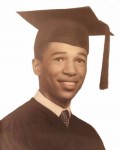
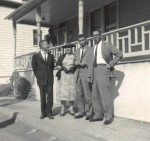
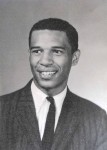
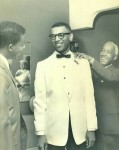
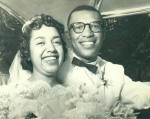

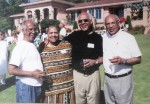


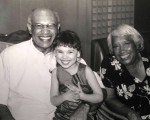

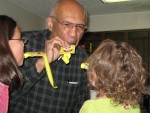
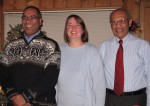
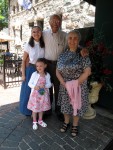
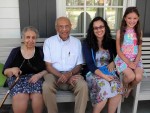
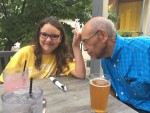

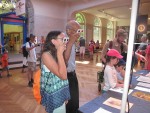
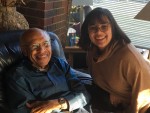


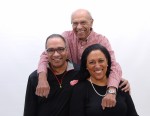
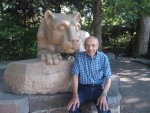
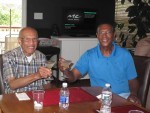


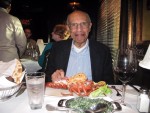
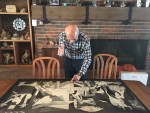

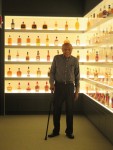
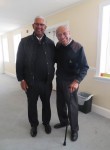
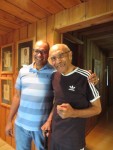
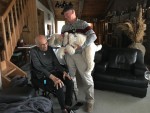
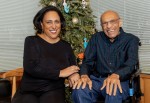
 Show More Photos
Show More Photos